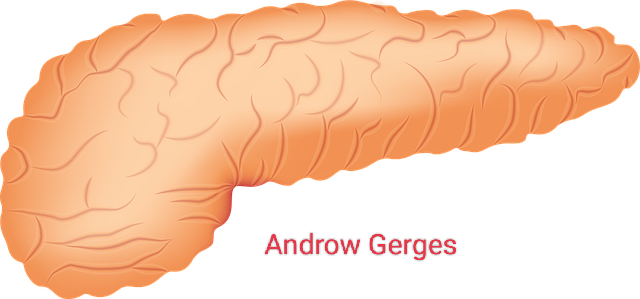 |
| The pancreas |
The pancreas
The pancreas is a small but powerful organ located in the
abdomen, behind the stomach. It is essential for maintaining the body's health
and well-being, as it plays a crucial role in the digestive process and hormone
regulation. In this article, we will explore the anatomy, function, and
diseases of the pancreas, and discuss why it is so important for our overall
health.
Anatomy:
The pancreas is approximately six inches long and shaped
like a flat, elongated triangle. It is surrounded by other vital organs,
including the stomach, small intestine, liver, and spleen. The pancreas is
divided into two main parts: the exocrine portion, which makes digestive
enzymes, and the endocrine portion, which produces hormones.
The exocrine portion of the pancreas is responsible for
producing and secreting digestive enzymes into the small intestine. These
enzymes help to break down the food we eat, so that it can be absorbed by the
body. The endocrine portion of the pancreas, on the other hand, produces
hormones such as insulin and glucagon. These hormones regulate the body's blood
sugar levels and help to maintain a healthy balance of glucose in the
bloodstream.
Function:
The pancreas plays a critical role in the digestive process
by producing and secreting digestive enzymes into the small intestine. These
enzymes help to break down the food we eat into smaller, more easily absorbable
molecules. Some of the most important enzymes produced by the pancreas include
amylase, lipase, and protease.
Amylase helps to break down carbohydrates, lipase breaks
down fats, and protease breaks down proteins. These enzymes work together to
ensure that the body is able to properly digest and absorb all of the nutrients
it needs to function.
In addition to its role in the digestive process, the
pancreas is also essential for regulating the body's blood sugar levels. This
is because the endocrine portion of the pancreas produces hormones such as
insulin and glucagon. These hormones work together to maintain a healthy
balance of glucose in the bloodstream.
Insulin helps to lower blood sugar levels by promoting the
uptake of glucose into cells, where it can be used as fuel. On the other hand,
glucagon helps to raise blood sugar levels by stimulating the liver to produce
glucose when it is needed. This delicate balance of hormones is essential for
maintaining good health and preventing diseases such as diabetes.
Diseases:
Despite its critical role in the body, the pancreas is
susceptible to a number of diseases and conditions that can cause significant
health problems. Some of the most common diseases affecting the pancreas
include:
Pancreatitis: This is a condition that occurs when the
pancreas becomes inflamed, usually as a result of blockages in the ducts that
carry digestive enzymes. Pancreatitis can be acute or chronic, and can lead to
serious health problems, including pain, malnutrition, and even death.
Diabetes: This is a condition in which the body is unable to
produce or properly use insulin. As a result, blood sugar levels become
elevated, which can lead to serious health problems, including heart disease,
stroke, and kidney disease.
Pancreatic cancer: This is a type of cancer that affects the
cells of the pancreas, and can be difficult to detect in its early stages.
Pancreatic cancer is one of the deadliest types of cancer, as it often goes
undetected until it is too late to effectively treat.
Conclusion:
The pancreas is a small but critical organ that plays a
crucial role in the digestive process and hormone regulation. Despite its
important role,
7 symptoms of pancreas problems
pancreatic cancer symptoms female
pancreatic cancer symptoms male
where is the pancreas located in the body
pancreas function in digestive system
what is the function of the pancreas
symptoms of pancreatic cancer stage 1
my first symptoms of pancreatic cancer
early signs of pancreatic cancer


Comments
Post a Comment
Have a nice day